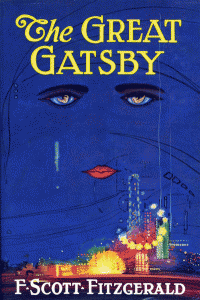Day by day, e-readers are making the trade of physical books more competitive, and though cut-outs and matte effects do not change a book’s content, cover art is becoming bolder and more experimental as a result of competition. There is a unique relationship between two art forms when a book is made which is perhaps relatable only to a film and its score, a reminder of just how necessary an attractive or striking cover is. The quality of the cover creates a distinct expectation of the writing inside, and so choosing a cover is one of the most important decisions a publisher makes in the process of a book’s release, especially in the ferocious fiction market.
Books have been design objects for centuries, and are often bought in this capacity by those who have no interest in the content, but rather in their aesthetic effect. The Lindisfarne Gospels, for example, dating back to the 7th or 8th Century and now in the British Library, were encased in embellishment and never designed to be opened, despite the sacred words within. Cover art can often reach a state of independence from the words within, and, in some cases, cult status among those who have never read even the book. Examples include some of the most recognisable books of 20th Century, and many modern novels too: the cover of The Great Gatsby by F Scott Fitzgerald and The Fault in Our Stars by John Green (see above) have posters, pencil-cases, and all manner of other merchandise based on their covers.
The current trend for cover art seems to be simplicity, with advertising for factual books like Ten Billion by Stephen Emmott showing the public how effective an uncomplicated design can be. However, fiction remains a little more decorated, and this can lead to disastrous covers, especially in the teen fiction section, despite this genre recently occupying many top spots in best-seller lists. While the Twilight Saga has striking colours and images on its covers, similar books like Cassandra Clare’s present a series of messy, poorly composed covers. Both are what one might call (however fondly) “trashy” but the differences still definitely command one’s expectations of the inside. A similar effect can occur with classics, as seen below in the contrasting Penguin Modern Classics edition of The Great Gatsby. The gloomy figures have a very different effect to that of the vivid example above, and yet they have both been chosen to represent the same story. Judge the book for the words and the object for the art, but judging a book by its cover can clearly only get you so far.

The Great Gatsby, 1973 Penguin Modern Classics Edition, detail from Montparno’s Blues by Kees Van Dongen
A problem with the increased pressure on a book’s appearance, its outer art, is that its contents can never be twinned exactly with a different medium. The pairing does not become a diptych, bonded by subject matter, however many editions are produced. They remain advertisements for the contents, just as full of untruths as adverts for anything else. This is, perhaps, one of the reasons simplicity has become so popular (see the new Penguin Hardcover Classics but risk a much lower bank balance), so that expectations are stripped away and abstract ideas can have precedence and judgement is reduced. Keep buying books for the reasons you always have, whether that means literature or design, because if you are reading this blog you probably care about the continuation of art for its own sake.
If you are interested in the best and worst of cover art, Flavorwire has an article on this subject, and a Dutch Booktuber, Sanne Vliegenhart, has a wonderful video on her favourite covers. I recommend both.
Photos thanks to:
http://en.wikipedia.org/wiki/File:Gatsby_1925_jacket.gif
http://en.wikipedia.org/wiki/File:The_Fault_in_Our_Stars.jpg
http://blogs.lse.ac.uk/impactofsocialsciences/2013/11/23/book-review-10-billion/
http://www.businessinsider.com/great-gatsby-book-covers-2013-5



